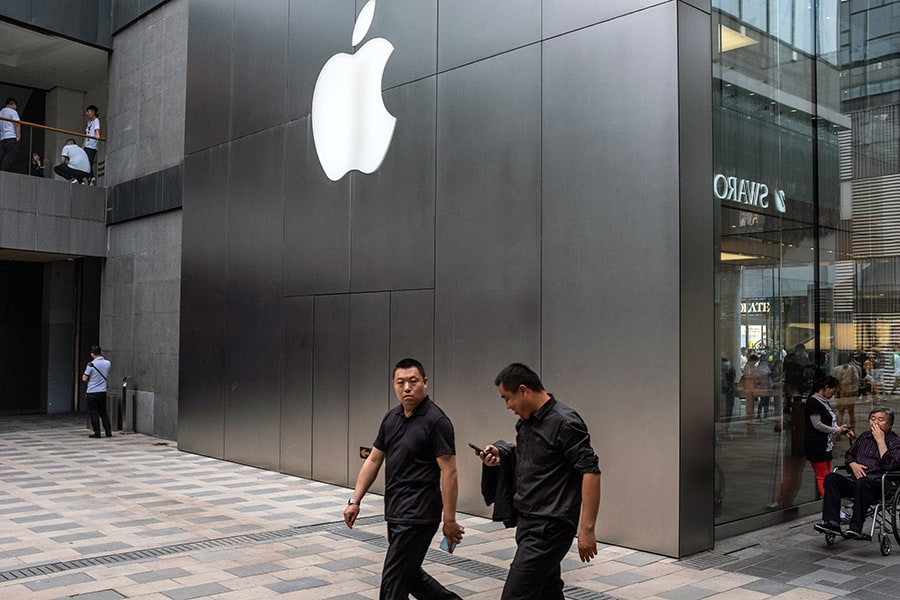
Why the US-China trade deal targets corporate secrets
The Trump administration blames China for stealing Western trade secrets; China has long denied that it forces foreign companies to give up technology. How will the pact fix the problem?
 An Apple store in Beijing on May 17, 2019. Technology companies like Apple set up ventures with local partners to handle data in China to comply with the country’s internal security laws.
An Apple store in Beijing on May 17, 2019. Technology companies like Apple set up ventures with local partners to handle data in China to comply with the country’s internal security laws. Image: Lam Yik Fei/The New York Times
BEIJING — The new trade deal between Washington and Beijing is intended in part to address one of the most acrimonious issues between them: China’s tactics in acquiring technology from companies based in the West.
It’s a thorny topic, and one that is unlikely to be fully solved with a trade pact.
The Trump administration blames China for stealing Western trade secrets, and it used those allegations as the legal basis for starting the trade war nearly two years ago. Trade talks between the two sides quickly became about broader issues, but the initial trade pact signed on Wednesday includes pledges by China to stop some of the practices that Western businesses have long criticized. Depending on the details, that could make the deal more palatable for U.S. businesses.
Underpinning these concerns is that China has repeatedly shown that it can acquire technology and, through heavy government subsidies, build competitive rivals to U.S. companies. Businesses worry that it could do the same in other industries, like software and chips.
China has long denied that it forces foreign companies to give up technology. They do it willingly, Beijing asserts, to get access to China’s vast and growing market. Still, Chinese officials say they are taking steps to address the concerns.
How does China get technology?
©2019 New York Times News Service




